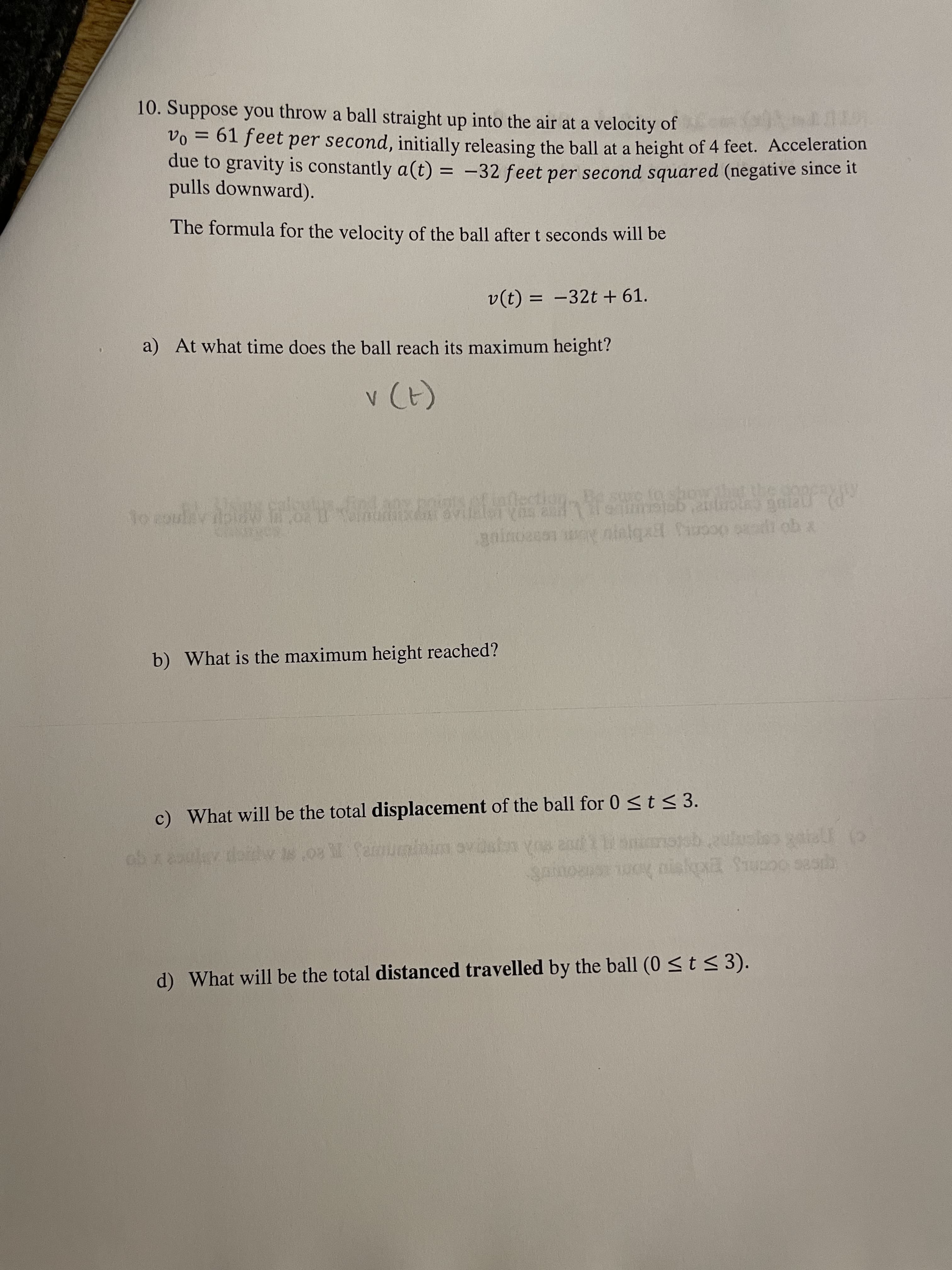10. Suppose you throw a ball straight up into the air at a velocity of Vo = 61 feet per second, initially releasing the ball at a height of 4 feet. Acceleration due to gravity is constantly a(t) pulls downward). -32 feet per second squared (negative since it | %3D The formula for the velocity of the ball after t seconds will be = -32t + 61. (1)a a) At what time does the ball reach its maximum height? (4) A suic fo show the 1o coulev ilolaw T ce mar avilal b) What is the maximum height reached? c) What will be the total displacement of the ball for 0
Displacement, Velocity and Acceleration
In classical mechanics, kinematics deals with the motion of a particle. It deals only with the position, velocity, acceleration, and displacement of a particle. It has no concern about the source of motion.
Linear Displacement
The term "displacement" refers to when something shifts away from its original "location," and "linear" refers to a straight line. As a result, “Linear Displacement” can be described as the movement of an object in a straight line along a single axis, for example, from side to side or up and down. Non-contact sensors such as LVDTs and other linear location sensors can calculate linear displacement. Non-contact sensors such as LVDTs and other linear location sensors can calculate linear displacement. Linear displacement is usually measured in millimeters or inches and may be positive or negative.
Would really appreciate some help!
Thank you!

Trending now
This is a popular solution!
Step by step
Solved in 2 steps with 2 images









